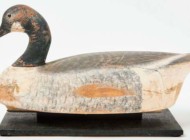Review and Photos by Madelia Hickman Ring & W.A. Demers, Additional Photos by Greg Smith
PHILADELPHIA – The Philadelphia Antiques and Art Show celebrated its 57th year in style at the Navy Yard April 26-28. Torrential rains on Friday and heavy winds both Friday and Saturday made it challenging to buyers and undoubtedly impacted attendance, but many dealers observed that those who determinedly braved the weather were in a buying mood.
Now benefitting the Philadelphia Museum of Art and presented by the museum’s Women’s Committee, the show broadened its scope a year ago to include more Twentieth and Twenty-First Century items. The show still retains the emphasis on American fine and decorative arts that clients have expected of it since its inception, one of increasingly few to do so. Karen DiSaia summed that sentiment up perfectly when she said, “The balance of the show was just right. It was founded on American antiques; it is the heart of the show and what brings people in.” Both DiSaia and her co-manager, Diana Bittel, recognize and are optimistic about the potential resources available through the museum and the Women’s Committee.
Speaking after the show, Lynn Gadsden, the show’s chairman and a member of the Women’s Committee, said between 2,500 and 2,600 people had attended. “It is not enough. One thing the Women’s Committee can work on for next year is to work harder at getting more groups around the country to come to Philadelphia for the show.” When asked about the future of the show, she said, “It will make a huge difference when the show goes to the museum. It will be more glamorous, more upscale. We are not New York, we are not going to evolve into the Winter Show. We are an antiques show, that’s how we have made our name.”
Woodbury, Conn.,-based dealers David Schorsch and Eileen Smiles reported more than a dozen items sold, with sales attributed to the quality of the pieces and competitive pricing in what Schorsch characterized as a “very healthy market.” Among the items to find new homes were a Boston Queen Anne inlaid walnut dressing table from the collection of Mrs Giles Whiting, a diminutive New Hampshire curly maple chest on chest, an early Queen Anne Boston veneered desk, a Windsor side chair and a Philadelphia Chippendale dish top tea table with acanthus carved knees and claw and ball feet. Folk art sold included a dramatic Crawford & Taylor mill ram weathervane, a Prior portrait, an angel head font, a Rhode Island or Massachusetts townscape and a fireman weathervane.
One of the dealers on the center aisle was Bernard & S. Dean Levy, New York City. Frank Levy said he had a good show, selling a pair of New York Chippendale side chairs, a side chair by John Elliott Senior, a Federal chest that was in the booth of Stephen and Carol Huber, a Philadelphia hot water urn, some pottery, a pair of Boston card tables and a Canterbury.
Alexandria, Va., dealer Sumpter Priddy III does just two shows a year, this one and the similarly Americana-based Delaware Antiques Show in the fall. Priddy had brought a large collection of oil paintings and watercolors by British-born but American-raised artist Alfred Jones (1819-1900), who had worked with both Thomas Cole and Asher Durand. Priddy said he had brought approximately 20 paintings and 200 watercolors to the show. The New-York and Maryland Historical Societies each have about a third of the artist’s body of work, the remaining third had been in the family of the artist. Priddy and a partner acquired them several years ago, and the collection was making its debut at the show. Reached at his office after the show, Priddy said, “We sold a few of the smaller works, but had both private and institutional interest on some of the others. It was a nice, strong show. Some of the highlights we sold were a set of eight Philadelphia chairs, a cellarette and a highly carved child’s sofa. A longtime institutional client resurfaced, which was great.”
Priddy’s fellow Alexandria, Va., dealer Taylor Thistlethwaite had two paintings aimed to capture the feel and spirit of the Navy Yard. One was Xanthus Smith’s circa 1863 “New Ironsides at the Philadelphia Navy Yard,” and a large painting of the USS Olympia by Lorenzo De Nevers. Both inspired interest though neither sold at the show. Sales included two Southern tea tables, a key basket by R.H. Rickets of Flint Hill, Va., was sold to an Atlanta, Ga., collector and a trivet from a Lancaster, Penn., collection. After the show, Thistlethwaite said he continues to do well with Southern material at shows and was optimistic he would have good post-show followup.
Also making their show debut was a group of 30 small paintings by Twentieth Century American folk artist Jean Jones Jackson (1907-1984). The collection had been in the personal collection of the late Stonington, Conn., dealer, Marguerite Riordan. The works were priced reasonably, between $1,700 and $4,000, and by the end of the show, Jeffrey Tillou, Jeffrey Tillou Antiques, Litchfield, Conn., said he had sold nine of Jackson’s works. He also sold some of the weathervanes he had brought and attributed some of his sales to e-blasts he did throughout the show.
Sommerville Manning Gallery’s booth was particularly strong in works by the Wyeths. All the Wyeths: N.C., Henriette, Caroline, Andrew and Jamie. The Greenville, Del., gallery has scheduled an exhibition of N.C. Wyeth’s works June 14-August 24 titled, “NC Wyeth: Painter and Illustrator,” which will include his illustrations, still life paintings and landscapes. One of the important works by N.C. Wyeth at the show was “When He Comes He Will Rule Over the Whole World.” The gallery sales comprised smaller paintings and bronzes, all by contemporary artists. “We look forward to seeing how the continued involvement of the Philadelphia Museum of Art benefits the show in the future, including it moving to the museum itself,” said Rebecca Moore, the gallery’s director.
Philadelphia miniatures dealer Elle Shushan said that the most popular miniature in her booth was a circa 1710 English enamel of Queen Anne, who is enjoying current popularity because of the movie The Favorite. Shushan also said that Maxine Helfman’s series “Historical Correction” did very well, being powerful images that evoke powerful reactions. Shushan has strong museum interest in the installation “Forefathers”; the edition she sold at the Winter Show also went to a museum.
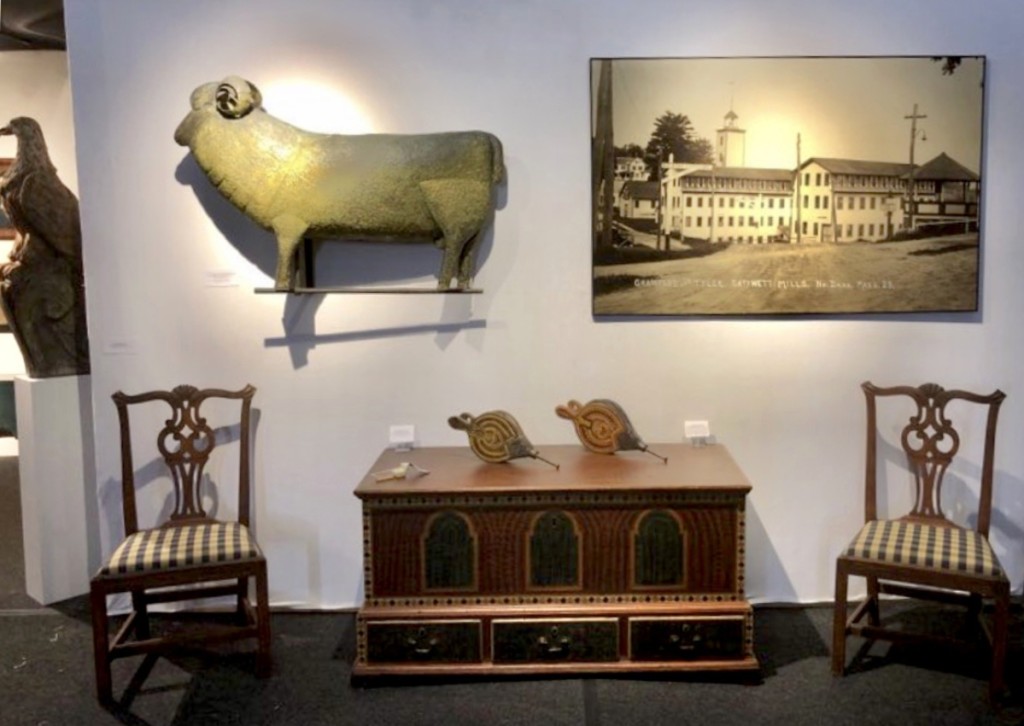
Eileen Smiles sold this ram weathervane from the Crawford & Tyler mills. It was visible in the vintage photo to its right. Cory Bowie photo, courtesy David A. Schorsch-Eileen M. Smiles American Antiques, Woodbury, Conn.
The show welcomed ten galleries to the show, the largest freshman class in the history of the show. Of these, only three: Silver Art by D&R (Marseille, France), Ian Simmonds (Carlisle, Penn.) and Maria and Peter Warren (Monroe, Conn.) trade in antique decorative arts, with the rest specializing in fine art or Twentieth Century decorative arts.
On opening night, Silver Art by D&R sold a circa 1873 French gilded silver table centerpiece by George Boin and Emile Taburet that they had advertised in the show catalog. Jasmine Doussiere showed off a bronze sculpture of a nymph and satyr by Clodion modeled after the original terracotta version now in the collection of the Legion of Honor museum in San Francisco. While neither sold at the show, Doussiere said they had also sold an antique French silver sauce boat by Abel Etienne Giroux that she said was very much in step with works in the show’s loan exhibition.
Lost City Arts was also making its show debut. Anchoring the back wall of their booth was a striking self portrait sculpture of Gertrude Vanderbilt Whitney titled, “Chinois.” Mixing both Art Nouveau and Orientalism, the 5-foot-tall gilded plaster figure was the prototype for two bronzes and a marble version that were made in 1914, with the marble version in the permanent collection of the Whitney Museum of American Art. After the show, James Elkind said it had seen considerable interest, and he was hopeful it would sell. Among things the New York City dealer sold were carved flying fish from Pitcairn Island.
Moderne Gallery, which began showing at the Philadelphia Show in 1997 but has been an intermittent participant because of the show’s on-again, off-again commitment to modern and contemporary design, returned last year when the museum became involved. Both Robert and Joshua Aibel hope future shows will attract a larger and more diverse audience by highlighting more Twentieth and Twenty-First Century art and design.
Another dealer to sell the piece they had advertised in the show catalog was Marcy Burns Schillay, who sold a shallow plate by San Idelfonso potter Tony Da. Now that the show has expanded the dateline for works sold, Schillay brought contemporary Native American pottery that made their show debut. The ceramics on offer included works by Nancy Youngblood Lugo, Tammy Garcia, Maria and Popovi Martinez, Lu Ann Tafoya, Harrison Begay Jr and Nathan Youngblood. Schillay said she had brought in a high percentage of collectors who buy from her, and she commented that it was critical to continue reaching out to a broader attendance to reach new clients.
M. Finkel & Daughter sold a sampler worked in 1804 by Jerusha West in Hadley, Mass., to Historic Deerfield; Amy Finkel said it related to one in Deerfield’s collection. The Philadelphia dealer also sold samplers from Salisbury Township, Penn., Burlington County, N.J., a linsey-woolsey from Massachusetts, a Quaker sampler from New York and a Scottish sampler.
Fellow needlework dealers, Stephen and Carol Huber, Old Saybrook, Conn., also had a good show, selling several samplers and needleworks, some to new clients. Carol remarked afterwards that they thought it was a beautiful show.
Olde Hope’s Pat Bell said he thought interest was strong and they had a good show. Several things sold at the preview party and on the first day, and several people returned to the show Sunday to buy things they had seen earlier in the show. Among Olde Hope’s sales were both Mahantongo chests, a Windsor rocker, a general store sign, a collection of chestnut bottles, an early needlework bag and a few smalls.
“It’s like the old days,” proclaimed Kelly Kinzle, who ticked off a list of things he had sold by early afternoon on Friday. Among the things the New Oxford, Penn., dealer sold were a pair of globes, a blanket chest, a painting by Severin Roesen, a hutch table, a chalkware cat, a miniature blanket chest and some silver. He said he had also done good business with other dealers.
Classical American decorative arts dealer Charles Clark said he had a productive show. During the preview party, he sold a set of Boston dining chairs attributed to Spooner and Trask to a couple from Dallas. A gentleman bought two Parian figures and the Woodbury, Conn., dealer also sold a pair of French porcelain reticulated baskets. Still under consideration by a museum were a pair of hanging sconces attributed to Cornelius and Company in Philadelphia and an Argand chandelier for another dealer’s client.
Gallerist Jeff Cooley paid homage to the nation’s founding father George Washington with an entire wall of his booth given over to artist Jac Lahav’s series on the great American. Lahav’s larger-than-life portraits are just finishing up a run at the Florence Griswold Museum in an exhibition that explores the ideas of who we consider great Americans. The artist is often cheeky, titling a trio of murky visages of Washington “Shades of George” and another depicting George in working man’s denim wearing a Ben Franklin tee-shirt. “I got to know him [Lahav] when he moved to Old Lyme,” said Cooley.
“I thought the show looked terrific,” he added. “It really is one of the truly great shows left. I think the association with the PMA proved valuable, and while I get the feeling there are kinks to work out, it seems to me the show has renewed vigor and potential. The venue is so great for move in and move out and for parking, etc. Is the Navy Yard too far away from the hub? I don’t have a sense. There was real energy on the floor opening night. And the subsequent two mornings, despite interesting weather, seemed to draw reasonable gates.”
Cooley, who specializes in American art, ranging from American Impressionism or Tonalism by artists from the Lyme Art Colony to Hudson River School paintings to pastels and sculptures by contemporary artists, said he had one of his better shows in a while. “Sold two things at the opening and then a couple more and made a couple good connections that are likely to produce sales,” he said. “All were traditional impressionistic works. I was a little disappointed that despite a lot of good attention that was paid to the modern and contemporary work, nothing moved on that front.”
Rare examples of Japanese embroidery from the Meiji period made a striking appearance in the booth of Greenville, Del., dealer Janice Paull. She has been personally collecting these, along with her trademark English ironstone for many years. “Good examples are increasingly difficult to find,” she said, “especially those that are in good condition, owing to the fact that collectors are repatriating them to their country of origin.” A pair of lions pad regally through a landscape in one of the framed embroideries on view, and in another, a tiger – Meiji period symbol of strength and courage – is shown among reeds looking up at the moon breaking through the clouds. This was the third year of doing the show for Paull, who also pointed out a large potpourri jar by Hicks and Meighs, circa 1820, as a highlight in her collection. “It’s a very interesting show. I sold last night [opening night preview] and today. I think working together with the museum is good for the trade.”
Their first time at this show, Harry and Robert Newman of The Old Print Shop, New York City, said they had not attempted to do anything thematic with their display but to, as Harry said, “just exhibit a range of what we do.” Among the standouts in the booth of the dealers known for fine prints, antique maps and art books was a rare memoriam to Alexander Hamilton by an unknown author and engraved by J. Soles, circa 1805. According to the dealer there are only two other known impressions of the rare memoriam in the US Library of Congress and one in the Museum of the City of New York.
“As first time exhibitors, we had a wonderful time at the Philadelphia Antiques and Art Show,” said Robert. “I had a broad smile when I walked in to set up, and thought to myself this is a proper antiques show. Unfortunately, it is one of the very few that are left.
“The public was very receptive for my material, American prints. We had a few good sales and many great conversations that could possibly lead to more good sales.
“The location is interesting but not conducive to large crowds, that being said, even on Friday when the storm hit there were people on the floor. There is talk about moving the show to the Philadelphia Museum grounds, which I support. I think this would be a great move for the show.
“Overall, Harry and I were pleased and are planning to come back next year.”
Paul Vandekar of Earle D. Vandekar of Knightsbridge was showing an Ashworth Brothers ironstone dinner service, circa 1893, comprising 45 pieces in the burnt-orange floral pattern – a central gilt rosette surrounded by a wide brocade border of peonies and gilt scrolls. The White Plains, N.Y., dealer also showcased an American classical mahogany footstool with griffin-head handles. He believed the Nineteenth Century piece to be mid-Atlantic, possibly Philadelphia. A fine art example here was an oil on canvas, circa 1800, titled “The Rochester to Margate and London Coach” by John Cordrey (British, 1765-1825). Shown is a coach pulled by four horses, passengers within and atop the coach. The painting measured 22 by 29 by 1½ inches.
Just one week after showing at the New York Botanical Garden show, Barbara Israel transported her striking garden pieces to the Philadelphia show. On the show’s first full day, there was a red sold dot on a small American lead fountain, circa 1950, with a mother duck and ducklings, the mother duck standing atop a ball, the ducklings at its base, the ball itself piped for water. “I seem to be doing well with things that appeal to children,” quipped the Katonah, N.Y., dealer. More serious fare included a pair of terracotta fruit baskets by Galloway Terra-Cotta Co., Philadelphia, circa 1917-20, and an American bronze fountain, 1923, of a nude young girl titled “Ouch” by sculptor Bonnie MacLeary (1890-1971), the girl with a crab pinching her finger.
Fans of early country furniture and decorative accessories would not want to miss choice items shown by Elliott and Grace Snyder, South Egremont, Mass. Highlights included an Eighteenth Century New England tavern table with one-board top and large overhang in old red over original red; a beautifully designed Nineteenth Century hooked rug with generous dimensions of 33¾ by 85½ inches; a rare child’s Windsor armchair with stretcher-less base and cupid’s bow crest in old black over white over original black, New England, Eighteenth Century; and a tricolor Pennsylvania blanket chest, circa 1830. Early in the show the Snyders sold a scarce early wooden hourglass, circa 1680-1720, and a Scandinavian mangleboard with double horse handle in original polychrome paint from the late Eighteenth or early Nineteenth Century.
“We were very pleased with the show,” said Arthur Liverant, phoning from the passenger seat in the car coming back to Connecticut from the show after the weekend. “We felt the relationship with the Philadelphia Museum of Art and the dealer’s group was very positive. The show is improving and will continue to improve. There is a good balance of traditional American antiques and new aesthetics.” Attendance seemed good on opening day, he observed, and looked to be steady throughout the weekend. Liverant was one of four dealers participating along with three collectors in a panel discussion about the joys of collecting – the great finds and the ones that got away – moderated by this year’s ADA Award of Merit honoree Laura Beach. The Colchester, Conn., dealer gave high marks both for this presentation and the ADA dinner honoring the Antiques and The Arts Weekly’s editor-at-large. Liverant’s firm, Nathan Liverant and Son, made an important sale at the show, a Federal cellaret with inlay, to the Philadelphia Museum. Made in Virginia and in completely original condition, the piece is a fine example of Southern decorative arts and now joins others in the museum’s collection.
At the show, the firm’s Kevin Tulimieri pointed out some special items in the booth, including a ship portrait of the US Navy frigate USS President, one of six original warships designed by Joshua Humphreys in 1794 and built at the Christian Bergh Shipyard on the East River in New York City in 1800. The unsigned watercolor on paper was done around 1804-17. Two cast bronze sculptures by Harriet W. Frishmuth (1880-1980), “The Vine” and “Crest of the Wave,” were dated 1921 and 1925, respectively.
Skip Chalfont had a curious item in his booth that sat atop a mid-Eighteenth Century maple tray top tea table that was getting a lot of attention. At first glance, a presentation brass inkwell seemed notable because the top part was inscribed “Charles Dickens Esqre.” Mysteriously, the West Chester, Penn., owner of H.L. Chalfant, pointed out a secondary hidden inscription seen only when the inkwell’s top bezel was removed. It read “A token of esteem and admiration” “Jane Swinburne, Ventnor, Isle of Wight, 1840.” Why, mused Chalfant, was such an inscription, usually meant to be seen in plain sight, executed so surreptitiously?
The dates for the 2020 Philadelphia Antiques and Art Show have yet to be finalized but Karen DiSaia said it would likely return to the Navy Yard. For information, www.philadelphiaantiquesandartshow.com.

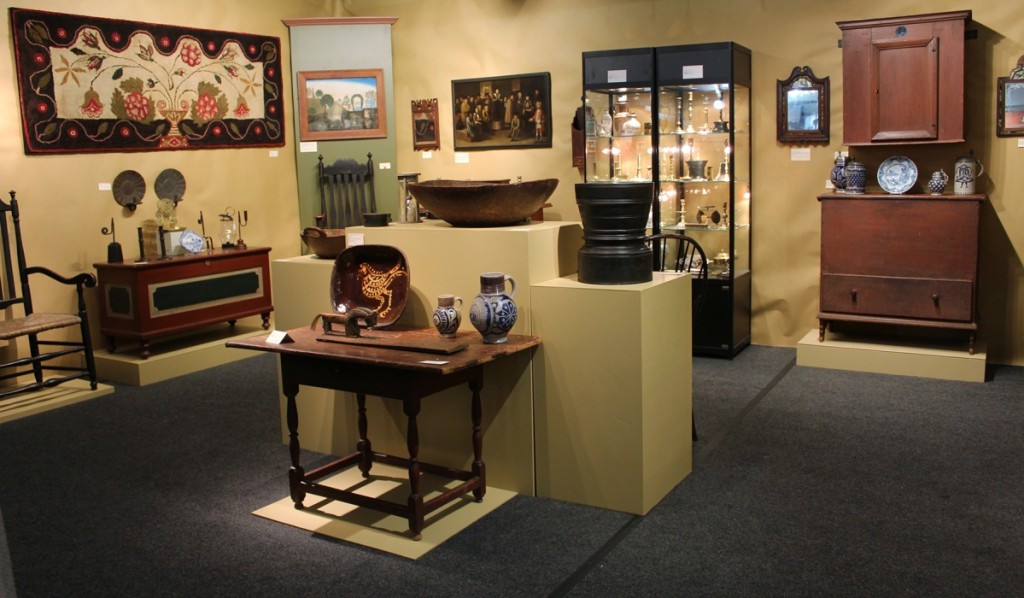
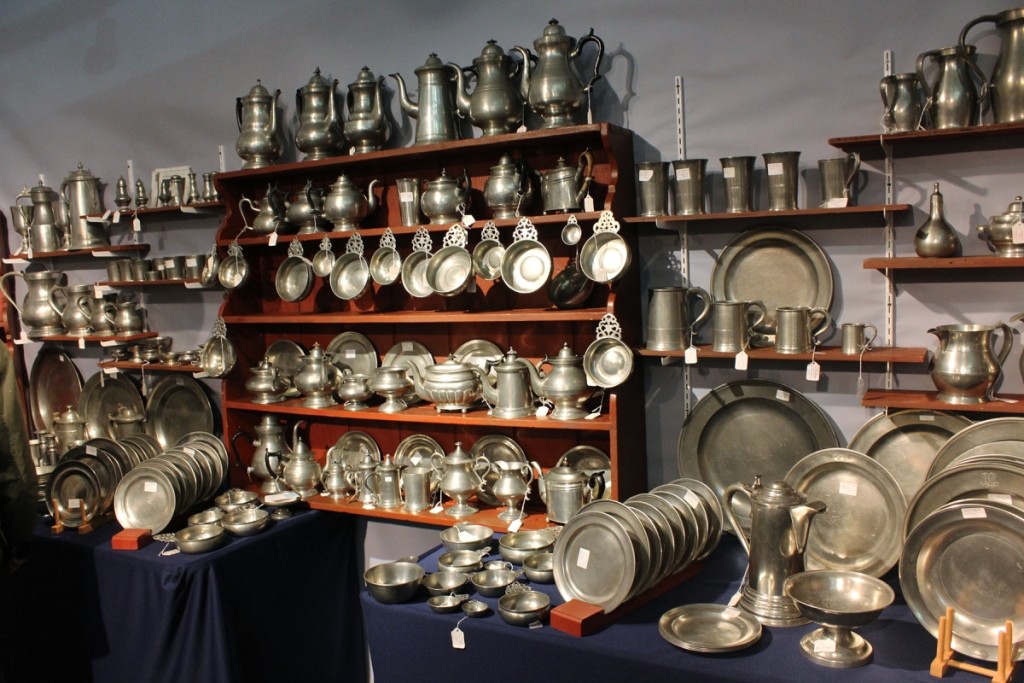
-1024x768.jpg)
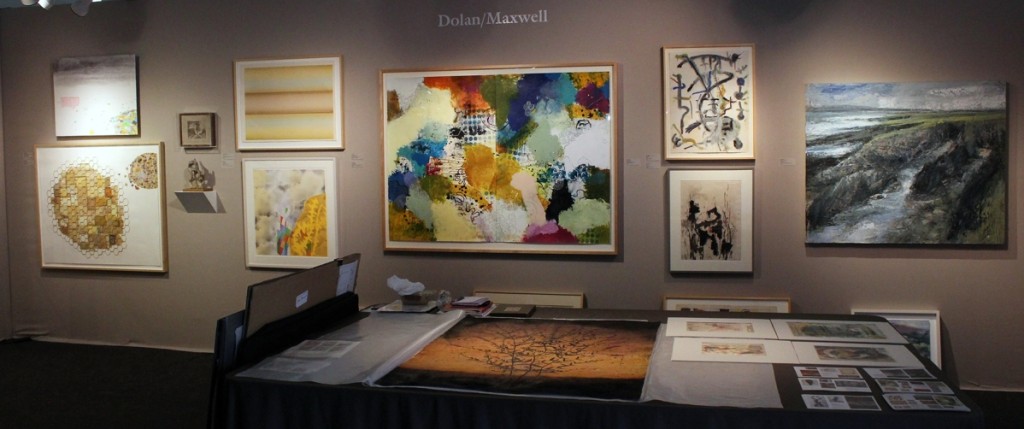
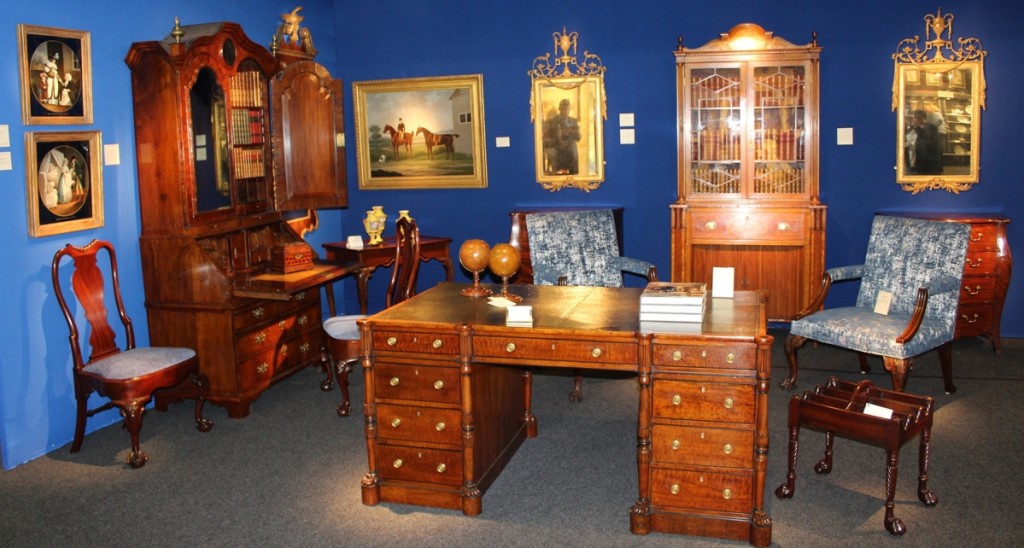
-960x1024.jpg)


.jpg)

.jpg)

.jpg)
2.jpg)
.jpg)
.jpg)
.jpg)
.jpg)
.jpg)

.jpg)
.jpg)
.jpg)
.jpg)
.jpg)
.jpg)
.jpg)
.jpg)
.jpg)
.jpg)
.jpg)
.jpg)
.jpg)

.jpg)
.jpg)






























.jpg)
.jpg)



